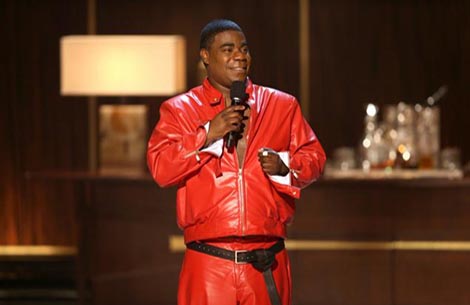
Fatigue Driving behind crash that seriously injured Actor and Comedian Tracy Morgan
American actor and comedian Tracy Morgan was involved in a car crash caused by Fatigue Driving. A truck driver failed to react to slowed traffic and slammed into a limousine van killing one passenger and injuring four others, on the New Jersey Turnpike.
Truck driver who was responsible for last Saturday’s crash that killed one passenger and injured four others, including comedian and actor Tracy Morgan, had been driving without sleep for more than 24 hours.
Fatigue driving causes: impaired judgment, slower reaction time, impaired coordination and increased aggressiveness.
Actor and comedian Tracy Morgan seriously injured due to a car crashed that occurred on the early morning of Saturday 7th June, 2014.
A tractor-trailer driver who had been driving without sleep for more than 24 hours failed to react appropriately to the slowed traffic and slammed into the limousine van killing James McNair, 62, and injuring four others, including the actor.
Driver fatigue has
long been a concern in New Jersey, which became the first state to prohibit
drowsy driving in 2003 with the passage of “Maggie’s Law.” The law defines a
motorist without sleep for more than 24 consecutive hours as a reckless driver
who could face vehicular homicide charges, up to 10 years in prison and a
$100,000 fine.
Kevin Roper, the driver of the tractor-trailer, has been charged with
vehicular homicide and four counts of assault by auto.
Sleepy drivers demonstrate similar effects to drunk drivers with their impaired judgment, slower reaction time, impaired coordination and increased aggressiveness.
“When you are sleep-deprived for more than 24 hours, you need stronger sensory stimulation to maintain alertness,” explains Xue Ming, a sleep medicine doctor at Rutgers New Jersey Medical School in Newark. “Sensory input such as light, noise and touch keeps people alert, but when there’s little stimulation, the brain will drift into a full sleep state or a micro sleep, which can last from a fraction of a second up to 30 seconds. In this state, the person feels like he is awake – he might even still have his eyes open – but he is actually asleep.”
Drivers are most vulnerable to drowsiness from 2 a.m. to 4 a.m. and 1 p.m. to 3 p.m., when their circadian rhythm – which regulates periods of sleepiness and wakefulness – dips. The circadian rhythm also prompts people to feel drowsy in diminishing daylight. “If a person had a big meal at lunch or did not sleep well the night before, this decline is more prominent,” says Ming, who stresses that shift workers are particularly vulnerable when they leave work in the early morning hours.







